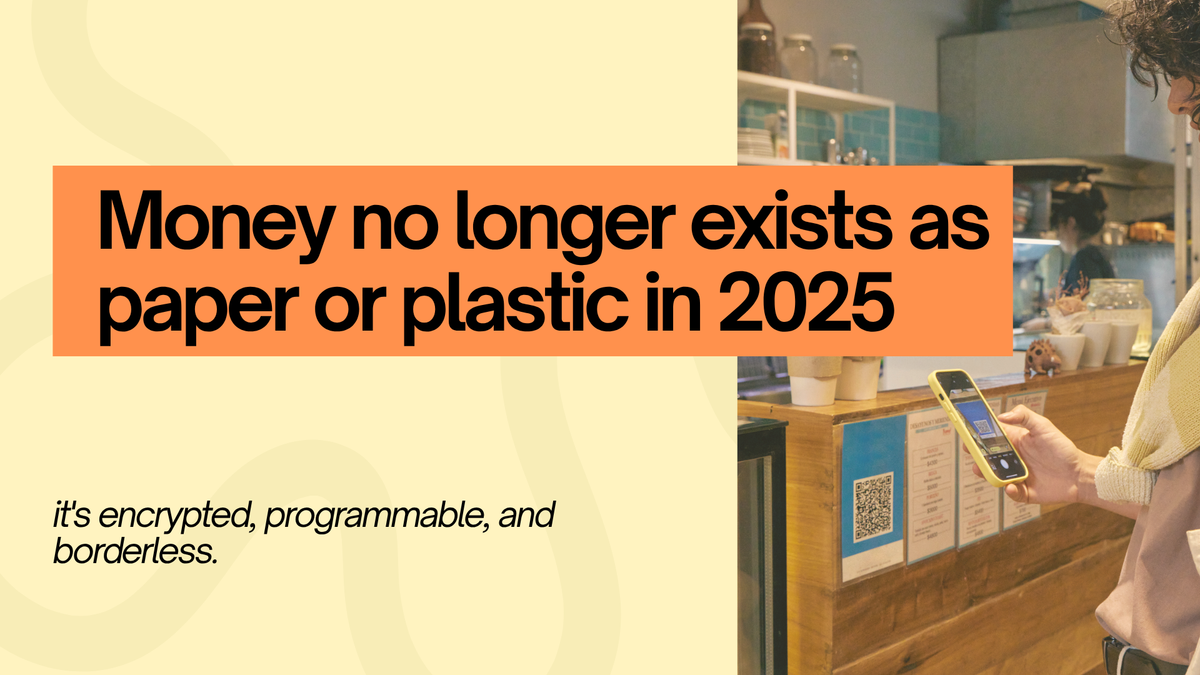India's Digital Rupee Goes Mainstream: What It Means for the Future of Global Payments
India’s Digital Rupee is now mainstream reshaping domestic finance and global payments. From CBDC-backed wallets to real-time trade, it marks a bold leap in the future of money.

By Allegedly News Network
Money no longer exists as paper or plastic in 2025—it's encrypted, programmable, and borderless.
India's Digital Rupee (e₹), which was initially a conservative pilot venture by the Reserve Bank of India (RBI), is becoming a pillar of the nation's digital economy in record time. While governments all over the world are working on Central Bank Digital Currencies (CBDCs), India's version is drawing international attention for its infrastructure-led approach, user-friendly design, and geopolitical significance.
So what does all this portend for the average Indian consumer, for fintech disruptors, and for the global payments of the future? And how does India's CBDC fit into digital currency initiatives in China, America, and Africa?
Let's Break It Down
The Rise of Digital Rupee 2025: What's Happening?
The Digital Rupee 2025 is out of beta. After its wholesale pilot launch in November 2022 and retail roll-out in December 2022, the RBI has gradually broadened the CBDC's coverage in prominent metros and tier-2 cities. As of mid-2025, the Digital Rupee is now supported in apps accessed by more than 1 million users and backed by major commercial banks and fintech platforms.
[Source: RBI bulletin or reputable news agency such as Business Standard or Reuters India.]
Key Features of India's CBDC:
- Issued and supported by the RBI
- Operates on a permissioned distributed ledger
- Is capable of offline usage in low-connectivity zones
- Interoperable with UPI and current digital wallets
- Facilitates real-time settlement without intermediaries, 24/7
The CBDC is not merely envisioned as a currency alternative but as a future-proof infrastructure for smart financial architecture.
Why Digital Rupee Matters in 2025
India is already a leader in digital payments—UPI sees more than 10 billion transactions every month. But the Digital Rupee takes it even further, a new era of monetary development: programmable, traceable, and customized for economic inclusion.
1. Financial Sovereignty in a Polarized World
Digital Rupee would enable India to cut dependence on Western payment infrastructure (such as SWIFT, Visa, and Mastercard), particularly cross-border trade. If India develops CBDC interoperability with the likes of the UAE or Singapore, it can settle trade without touching the U.S. dollar—a major geopolitical weapon.
[Source: Cross-border CBDC pilot mention in BIS or Project mBridge reports.]
2. Empowering the Unbanked
The RBI hopes the CBDC will exist alongside physical cash, but not supplant it. Nevertheless, the offline functionality of the Digital Rupee might make it invaluable in rural and poor areas. Combined with Aadhaar and Jan Dhan accounts, it offers unparalleled access to finance for the previously excluded.
3. Welfare, Subsidies & Transparency
With programmable capabilities, the government can directly distribute subsidies, pensions, and refunds without middlemen. This reduces fraud and leakages in programmes like PM-KISAN and MGNREGA.
How India Compares Globally
The world is headed towards digital money but the roadmaps differ wildly by region. Here's how India compares.
China's Digital Yuan (DCEP)
China's Digital Currency Electronic Payment system is the most sophisticated CBDC project in the world. It has already handled billions in pilot transactions, has been utilized at the 2022 Winter Olympics, and is being integrated into local apps such as WeChat and Alipay.
- Deeply centralized and heavily controlled
- Perceived as a means of domestic monitoring and geopolitical influence
- China seeks to extend its reach through Belt and Road alliances
India's model is more open, layered, and inclusive, particularly with its public-private UPI architecture.
U.S. and the Cautious Fed
The U.S. has initiated FedNow for real-time payments but has been reluctant to embrace a complete CBDC. Fears of privacy erosion, bank disintermediation, and Big Tech hegemony have made the Federal Reserve cautious.
- FedNow is enhancing settlement speed but does not substitute cash
- CBDC debates center on civil liberties and institutional disruption
- No timeline currently for complete digital dollar
India, on the other hand, is piloting and scaling at the same time, having much greater faith in digital financial infrastructure.
Africa's CBDC Leap
Nigeria's eNaira and Ghana's eCedi represent the peculiar requirements of African countries—particularly regarding cash economies and limited banking penetration. Adoption is diversified: Nigeria experienced public doubt, but mobile-driven models may yet thrive across the continent.
India can be a blueprint for Global South countries wanting to create scalable, mobile-first digital currencies.
Strategic Play: CBDC + UPI + Aadhaar
India's CBDC genius is not the currency it's the ecosystem. When paired with:
- UPI (universal interoperability),
- Aadhaar (biometric ID), and
- DigiLocker (e-documents),
India is building the world's strongest digital finance stack in stealth mode.
This trifecta allows for frictionless, secure, and real-time transactions for all—from billion-dollar corporates to Bihar's farmers.
What About Privacy?
CBDCs globally are receiving resistance on the grounds of surveillance concerns. The critics say that digital money can turn into instruments of state control, especially where transactions are entirely traceable.
India has guaranteed:
- Partial anonymity for low-value transactions
- No central storage of individual usage information
- Privacy restrictions similar to physical cash rules
But data protection regulations are still awaiting passage, and experts caution that greater transparency and protection are required before universal adoption.
Implications for Global Payments
The Digital Rupee may do for international payments what UPI has done for domestic payments: accelerate them, reduce their cost, and make them more accessible.
1. Cross-Border Settlement
India has partnered under Project m Bridge a pilot by the BIS for multilateral CBDC settlement with China, UAE, Thailand, and Hong Kong. If it works, this may:
- Cut foreign wire charges
- Skip currency conversion bottlenecks
- Strengthen trade with non-Western allies
2. Exporting India's Digital Stack
Indian fintech companies (such as Paytm, Razorpay, and Pine Labs) have the potential to become international CBDC service providers, providing APIs and wallet systems to smaller countries adopting digital money.
3. Digital Non-Alignment
India has a great chance to spearhead a "non-aligned fintech movement" enabling nations to digitize finance without relying on the U.S. or China.
The Future of Money Is Fragmented : But India Wants In
The era of a single global currency (USD) is waning. What we’re seeing is a multipolar digital finance system where countries issue their own digital currencies, define their own rules, and fight for influence.
India’s Digital Rupee is a calculated move not just for efficiency, but for geopolitical and economic sovereignty.
In the words of RBI Deputy Governor T. Rabi Sankar:
"CBDCs are not merely about payment systems. They are about the future architecture of finance."
What's Next?
Look for 2025 to be the breakthrough year for India's Digital Rupee. From enlarging offline reach in backcountry India to conducting cross-border interoperability tests, the plan is already emerging.
India has the potential to be the "Fintech OS" for the Global South but only if it protects privacy, stays open source in ethos, and doesn't overdo it.
The stakes? Nothing short of the future of money itself.
Conclusion: The Digital Rupee Isn't Just a Payment Upgrade—It's a Power Shift
The launch of India's Digital Rupee in 2025 represents a watershed moment—not just the way people make payments, but the way countries exercise digital sovereignty.
Something more than a tool for making payments, the Digital Rupee is a template for the programmable money of the future—inclusive, traceable, efficient, and resilient. It completes India's digital public goods ecosystem and sets the stage for a new world order in financial alignment, particularly among developing countries.
But it will rely on public faith, strong regulation, and international cooperation. As India gazes towards leadership in digital finance, the world is paying attention—not only to what it constructs, but how responsibly it constructs it.
Stay ahead of the fintech curve?
Subscribe to Allegedly News Network for clever, incisive, and unvarnished opinions on the technologies defining tomorrow's economy. From blockchain to CBDCs, AI to asset flows decoding them so you don't have to.
Subscribe today. The future is being written and Allegedly is on the by line.




